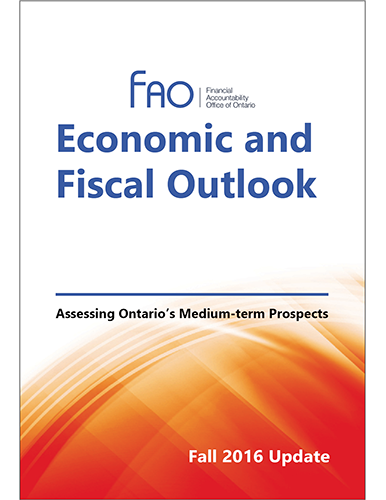Economic and Fiscal Outlook – Update, Fall 2016

This report provides an assessment of Ontario’s economic outlook and the Province’s fiscal position.
Economic and Fiscal Outlook – Update, Fall 2016, Financial Accountability Office of Ontario, 2016.

